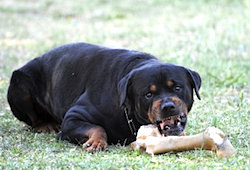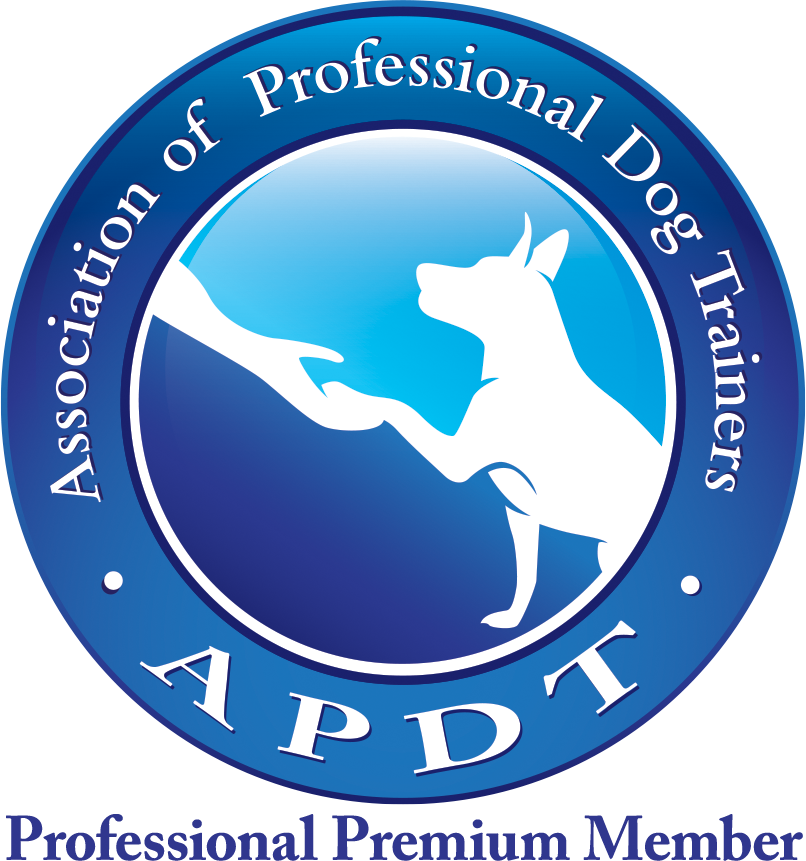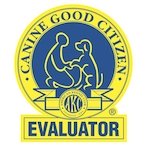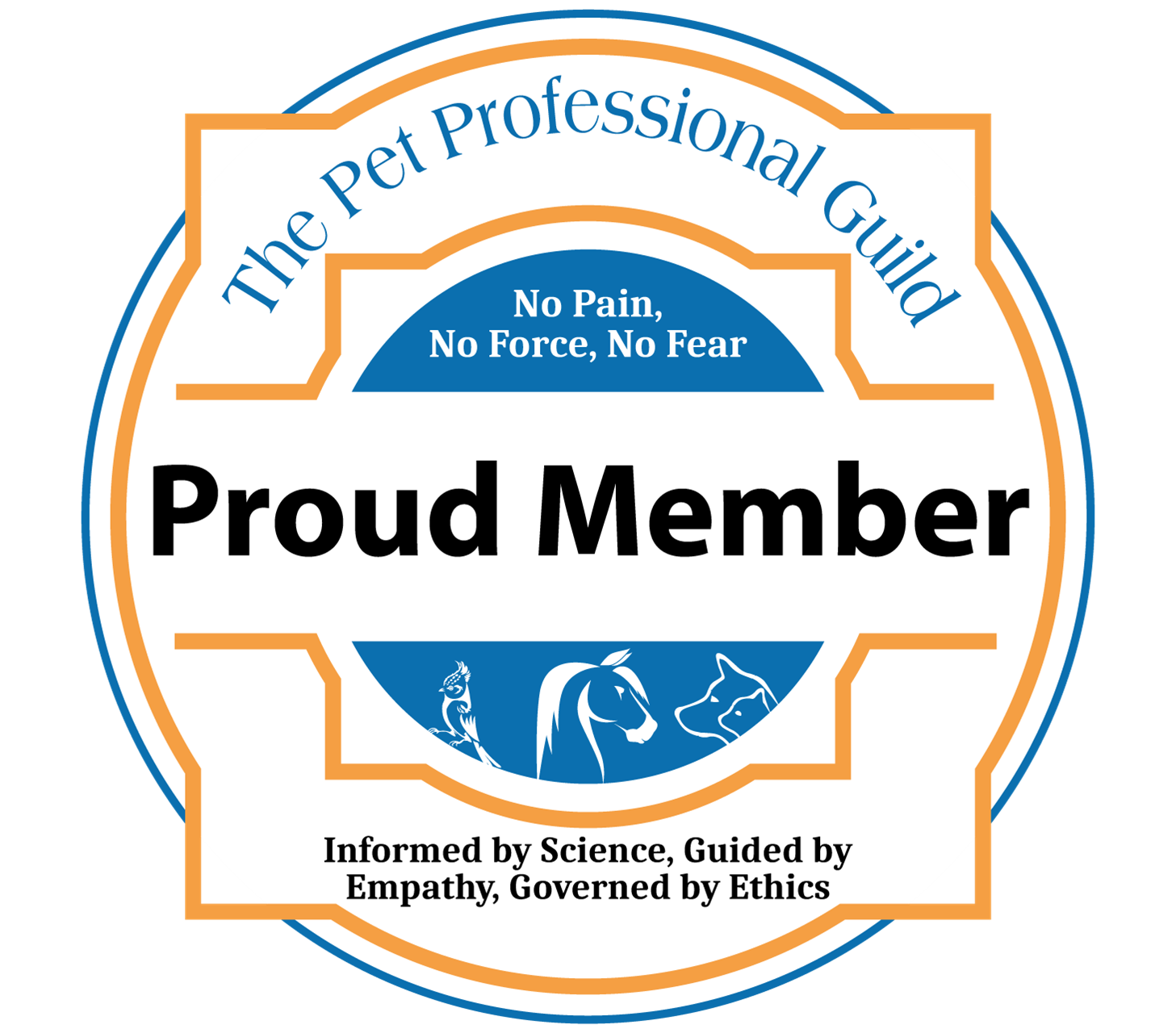I try to write my posts as unbiased as possible and recommend the products I consider to be useful and the best. I use affiliate links, this means that–at no extra cost to you–I can make a commission on a purchase you make after clicking on them. As an Amazon Associate I earn from qualifying purchases.
Control Dog Food Aggression
with Positive Methods
Solve dog food aggression using positive methods. If you see your dog growling and barking when you approach his food you will find help here. This type of aggressive dog behavior is called Resource Guarding. It happens very often with food items, but hounds can also guard their territory, toys, or even his owner.
A note of caution about dog food aggression
If you have never trained your pooch in any way, you will need to first learn about positive methods, dog body language and a little bit of dog psychology. Start by reading the main article on resource guarding, which will guide you in this task.
Even though you will find a lot of advice and step-by-step guides in this website, resource guarding in dogs can be a serious issue and I highly recommend you find a certified and positive dog trainer to help you along safely. Having one-on-one help can be priceless to learn how to act and react to your pet.
If you do not feel comfortable with a trainer, change to another one. Never let anyone (professional or not) handle your hound in a way that makes you uncomfortable.
Lastly, I want you to understand that this is NOT an issue of dominance. Your pet is probably stressed and food guarding is how he deals with it. Be a confident leader to your dog and never use punishment!
Solving dog food aggression summary steps

1- Start training your hound, preferably using clicker training. Teach him basic dog commands like sit, down and stay.
2- Take away anything around the house that triggers guarding in your pet: rawhides, pig's ears, Kong toys. You will also need to feed your canine friend only twice a day (3 times if you have a puppy). In the morning, put the food bowl down for 15 minutes, then remove it and place it in a safe place (which your dog can't reach). Do the same in the evening. This is important to create a feeding routine.
3- We will use Systematic desensitization and Counterconditioning combined to help your pet feel more secure and less stressed.
4- You will start the training yourself, but eventually you will need every member of the family and even distant family and friends to help you as well.
Treating dog food aggression Step-by-Step guide
This is a sample step-by-step-process, you might need to change it depending on your situation. The whole idea is to give you and example you can follow and adapt to your particular dog food aggression case.
Please wear protective gloves (keblar is ideal) and better yet get the help of a certified dog trainer. There is always a risk of injury when training animals and you assume all responsibility, please read the full disclaimer.
Dog food aggression training STAGE 1:
Goal: to be able to WALK BY your hound and an EMPTY food bowl without your dog growling, braking, snapping, freezing or showing any signs of stress. Instead your dog should be relaxed and even excited and eager for you to approach.
What you will need: your hound's empty bowl, regular kibble and the best dog treats you can get (that your dog will go nuts about).
These special treats should ONLY come out when doing dog food aggression exercises. Do not use them in any other occasion!
Set up: The idea is to create a situation similar to what triggers food guarding in your dog but that WILL NOT make your pet growl or bark at you. Before you can advance to the next step, your dog should look relaxed and even happy.
- Place your pet's empty bowl on the floor, if he lets you stay near it, then stay. Otherwise place yourself as far as you need until your pet is not growling or barking anymore.
- Walk towards the bowl and toss a yummy treat in it. Immediately walk away. If your hound won't let you get close enough, try tossing it from a safer distance.
- Repeat this many times, until your canine friend starts changing his attitude and instead of growling he is now quite eager for you to approach (since you are tossing treats every time!). This can take from many repetitions to many days or weeks!
- Once your pet starts showing that he likes you to walk and toss a treat, start randomly mixing treats and regular kibble. So, sometime you will toss a piece of kibble and sometimes the yummy treat.
- Finally, start mixing kibble, treats and nothing. Sometimes you will toss kibble, sometimes a yummy dog treat and sometimes nothing at all (just walk by). Do this in a random manner so your pet cannot predict what is coming.
- Repeat steps 1- 6 but approaching from different distances, from different angles, with different objects in your hand (a ball, laundry basket, toy, etc).
You should do 30 min training sessions (daily). You will be walking towards and away the food bowl many times. You can also vary the pauses. For example, you can do 10 trials in a row walking towards the bowl, tossing a treat and walking away. Then wait a few second in between trials. Change the time you wait in between trials at a random manner, 10 sec, 1 min, 5 sec, 35 sec, etc. Think of it as a dance!
You are ready to move on to the next step if your dog is completely relaxed when you approached his empty food bowl, drop a treat (kibble or nothing) and walk away. This done from many distances, angles and with different intervals between trials.
Dog food aggression training STAGE 2:
Goal: Walk by your canine friend and an EMPTY food bowl, BEND DOWN and REACH towards the bowl without your dog growling, braking, snapping, freezing or showing any signs of stress. Instead your dog should be relaxed and even excited and eager for you to approach.
- Place your furry friend's food bowl on the floor, empty. You will repeat a few of the steps from STAGE 1 to get your dog warmed up to this training session.
- Walk towards your pooch and his food bowl and this time bend down half way, as if to pick the bowl up, toss a treat and immediately walk away. If your pet reacts to you bending, try bending less, maybe 1/4 of the way.
- Repeat many times until you dog shows no fear or aggression.
- Mix treats, kibble and nothing just like before.
- Approach from different distances and angles. Also vary the pauses between trials.
- Repeat steps 1-5 but bending a little bit more, 3/4 of the way. Remember to toss the treat right away and leave immediately.
- Repeat steps 1-5 bending all the way with your hand stretched towards the bowl.
- Repeat steps 1-5 bending all the way, hand stretch and briefly touch the bowl BEFORE you toss the treat.
It is very important that you start with #1 when you add a new difficulty (like bending more or stretching your hand), no matter how easy or simple you think it is. You WANT your pet to succeed on each step. If you never see any signs of fear or aggression along the way, then you are moving along at the perfect speed. If your dog shows any aggression, then you need to move more slowly.
You are ready to move on to the next step if your dog is completely relaxed when you approached his empty food bowl, bend down, briefly touch the edge of the bowl, drop a treat (kibble or nothing) and walk away. This done from many distances, angles and with different intervals between trials.
Dog food aggression training STAGE 3:
Goal: Walk by your dog and an EMPTY food bowl, bend down, touch the food bowl FOR UP TO 30 SECONDS without your dog barking, growling, snapping, freezing or showing any signs of anxiety. Instead your dog should be relaxed and even excited and eager for you to approach.
You are getting the idea right?…We are just moving very slowly towards an end goal.
- Place your furry friend's food bowl on the floor, empty. You will repeat a few of the steps from STAGES 1 and 2 to warm up your hound.
- Walk towards your pooch and his food bowl and this time bend down, touch the bowl and keep your hand touching it for 2 seconds, then toss a treat and immediately walk away. If your pet reacts, try 1 second.
- Repeat many times until you see no stress or aggressive signals from your pet.
- Mix treats, kibble and nothing just like before and keep repeating it.
- Approach from different distances and angles. Also vary the pauses between trials.
- Repeat steps 1-5 staying 5 seconds. Mix them with the 2 and 1 seconds randomly.
- Repeat steps 1-5 touching the bowl for 10 seconds. Mix them with the 2 and 5 seconds randomly.
- Repeat steps 1-5 touching the bowl for 20 seconds. Mix them with the 2, 5 and 10 seconds randomly. You can add other intervals between 1-20 seconds as well. Always randomly.
- Repeat steps 1-5 touching the bowl for 30 seconds. Mix them with the 2, 5, 10,20 seconds randomly. You can add other intervals between 1-30 seconds as well. Always randomly.
The number of times you need to repeat each step depends entirely on how your dog is reacting. If he is calm and happy, move on to the next step, if not keep repeating the same step. You will need LOTS of repetition in the beginning, so just be patient. If at any point your dog shows overt signs of aggression (barking or growling) you need to step back.
You are ready to move on to the next step if your dog is completely relaxed when you approached his empty food bowl, bend down, touch the bowl for up to 30 seconds, drop a treat (kibble or nothing) and walk away. This done from many distances, angles and with different intervals between trials.
Dog food aggression training STAGE 4:
Goal: Walk by your dog and an EMPTY food bowl, bend down and LIFT the food bowl TO A TABLE and add treats without your dog growling, barking, snapping, freezing or showing any signs of stress. Instead your dog should be relaxed and even excited and eager for you to approach.
The idea is the same as before, but now the tiny steps have to do with you moving the food bowl around. First move it a few inches, add the treats, move it back. Then a few more inches, then up a few inches, then up half way to the table, etc. Remember to mix treats, kibble and nothing. Also to approach from different directions and have pauses of different intervals. Everything done randomly, so your dog can't predict what is coming.
It is very important that you always do all of your manipulations (bending, touching, adding time, moving the bowl) BEFORE you add the treat. This is basic classical conditioning. You approaching and grabbing his bowl predicts he will get yummy treats and he will start liking it.
Dog food aggression training STAGE 5:
Goal: Walk by your dog and an EMPTY food bowl, bend down and PAT your hound on the head/back, then add treats without your dog growling, braking, snapping, freezing or showing any signs of stress. Instead your dog should be relaxed and even excited and eager for you to approach.
Again, create a plan where you first pat him lightly one time, for 1 seconds and steadily add more seconds up to 5 or 10 seconds.
This can only be done if you pet is comfortable being touched. If he isn't, make sure you spend some time getting your pet used to being touched (Read about dog socialization).
Dog food aggression training STAGE 6:
Goal: Walk by your dog and an EMPTY food bowl, bend down, PAT AND GRAB the food bowl to take it to a table, then add treats without your dog growling, braking, snapping, freezing or showing any signs of stress. Instead your dog should be relaxed and even excited and eager for you to approach.
To do this start with little petting time. For example, one second pat on the head then take the food bowl, add treats, return it immediately and walk away. Then add more patting time but only move the food bowl a few inches. Keep making it harder slowly until you can pat your dog for 5 seconds, take the food bowl away, add treats and return it.
You might have noticed that now I am combining two things we did before,
petting your hound AND grabbing the food bowl. This needs to be trained.
NEVER assume that your pooch will put two and two together. Also have in mind that when you combine two things, you need to RELAX one of them. Don't expect your hound to react 100% fine when you add both.
Dog food aggression training STAGE 7:
Now you will actually repeat Training STAGES 1-5 but WITH KIBBLE in the food bowl already.
Yes, start from the very beginning because having food in the bowl is a whole new thing to your pet!
Dog food aggression training STAGE 8:
Repeat Training STAGES 1-5 but WITH CANNED FOOD in the food bowl already. You can do a mix of canned and kibble instead too. The idea is that canned dog food is more palatable to your pet and so the exercise is harder. That is why you MUST start with Training STAGE 1 (but with food in the bowl)…yes, all over again.
The good news is that the more you practice, the better your hound will get and the faster he will move on. For example, when you first started with Training STAGE 1 it might have taken you a week or two until you were able to move on to Training STAGE 2. But on Training STAGE 7 you will be able to move from STAGE 1 to STAGE 2 much faster. Don't rush it though, slow is always better.
Dog food aggression training STAGE 9:
Repeat Training STAGES 1-5 but WITH HOMEMADE TABLE FOOD, like roasted chicken in the bowl already. This is going to be extremely hard for your dog, because it will be super yummy, besides you need to find a treat that is of equal or higher value than the food in the bowl (maybe a different type of home made table food like beef). You MUST start with Training STAGE 1….yes, all over again..again.
Keep a log of each training session, this will help you see progress even when it is very slowly. It will also help you remember where you ended on the last training session so you know where to start…because you never want to have a strong start! No dog barking, growling or freezing at any time!
Dog food aggression training STAGE 10:
Repeat Training STAGES 1-8 with a different family member.
Then do it with someone else…and somebody else…at least 3 different people. The more the merrier!
By now you should be seeing a lot of progress in your ex-resource guarding dog.
Dog food aggression training STAGE 11:
Your hound should be doing great by now. All you need to do from now on is once in a while approach his food bowl while he is eating and drop a piece of yummy food. Do this randomly, sometimes take the bowl away to add the treat, sometimes pat him. Mix and match everything above, but not every day or during the whole meal. Just once in a while to check that things are OK.
Finally, if the dog food aggression also happens with rawhide or bones, plan a similar training plan starting with a treat that is not that valuable, like an old rawhide or bone instead of a new one. Maybe some other treat that is not so valuable to your pet, then follow a plan like the one described above.
Hope this example helps you create one for your dog. If you have any questions or would like to tell us how things are going please fill out the form in this link!
Home > Resource Guarding > Dog Food Aggression




New! Comments
Questions? Anecdotes? Tips? Leave me a comment in the box below.